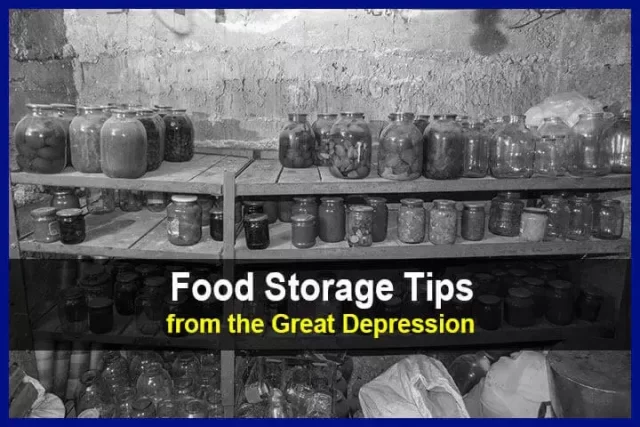
During the Great Depression in the early quarter of the 19th century food storage was life saving knowledge. Here are some tips from that era:
Maintaining a stored food supply has been an essential part of survival for countless generations in times of need. However, one of the big questions people had both then and now concerns the safety of their preserved food. Here are five factors to consider when storing food.
Temperature: Temperature is critical to a food’s shelf life. The USDA states that for every increase of 10.8 degrees in temperature, you decrease the shelf life of stored food by half. The best temperature range for a pantry is between 40 and 60 degrees.
Moisture. For long-term storage, foods should have a 10 percent or less moisture content.
Oxygen. Removing oxygen from a food and its packaging helps it maintain freshness.
Light. Exposure to sunlight can degrade food.
Container. Aim to store foods in food-grade plastic, metal, or glass containers that have a tight seal.
Pests. To keep insects and other pests out of your stored food, here are some general guidelines:
- Freeze grain-based food for a few days before long-term storage to kill insect eggs and larvae.
- Store food in air-tight plastic or metal containers.
- Use the first-in, first-out (FIFO) rotation method.
- Immediately clean up any food spills.
- Regularly wipe out pantry shelves and vacuum the pantry area.
- Keep food up off the floor.
- Use caulking to seal cracks or anywhere food is stored.